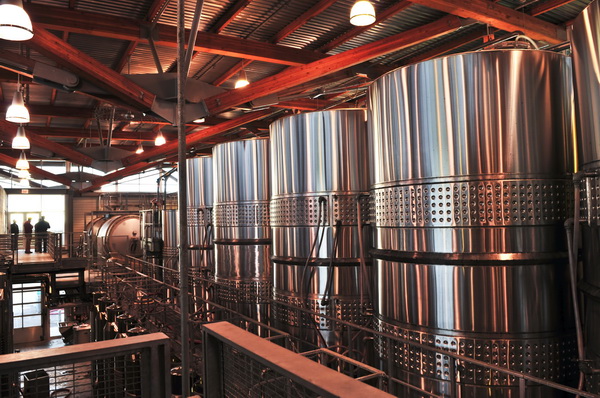 Most of the wines that I taste are bottled and on the liquor store shelves, or about to be there. However, when I attend a tasting with a winemaker who is visiting my city or when I travel to wine regions, I am often tasting tank or barrel samples.
Most of the wines that I taste are bottled and on the liquor store shelves, or about to be there. However, when I attend a tasting with a winemaker who is visiting my city or when I travel to wine regions, I am often tasting tank or barrel samples.
Sometimes, these samples get sent to my office in a generic wine bottle with a hand-written sticker telling me when the wine will be bottled, which is a future date.
This is because the winemaker is keen to show you his or her new baby, even if that child is still a red-faced, screaming infant. I find it challenging, but not impossible, to taste and evaluate wine samples that are drawn from the tank or barrel before they’ve been bottled.
 Usually, the wine has yet to come together in all its elemental glory: an integrated weave of fruit, alcohol, tannin, acidity, flavour and aroma. Being a super taster can make it more challenging because I’m so sensitive to each of the components in wine, so at an early stage they can taste like separate ingredients … or to make another comparison, more like an orchestra warming up, than playing together.
Usually, the wine has yet to come together in all its elemental glory: an integrated weave of fruit, alcohol, tannin, acidity, flavour and aroma. Being a super taster can make it more challenging because I’m so sensitive to each of the components in wine, so at an early stage they can taste like separate ingredients … or to make another comparison, more like an orchestra warming up, than playing together.
However, I feel it’s important to still give it the old college try, since it can be interesting to evaluate wines in their early stages, and then taste them again as they evolve. That’s actually why I recommend to wine lovers that they buy a case of a wine they love (and that’s capable of aging), and then to taste a bottle every year until you know you’ve got the sweet spot of maturity and then enjoy it more often.
A separate, but far less frequent challenge, is tasting different batches of wine. Wines are often labeled as batch or lot numbers, even though it is the same wine in terms of vintage, grape(s), vineyard(s), blending, and so on.
For example, there may be 10,000 bottles made of the 2014 Chateau Blue Cabernet Sauvignon from Chile. Bottles 1-1000 may be numbered as Lot 1-7 or Batch 1-7, and so on. I may taste Lot 9, which is among bottles 1001-2000.
Sure, there can be some variation, but we’re talking about very small margins that matter to very few people, especially when the wine is fairly consistent year to year and is not a rare, collector’s wine.
All to say that tasting wine is an inexact science. All you can you do is try your best with the wine samples you have and give the most guidance you can to those who follow your recommendations.
You can read more about how I taste wine and my scoring process.







